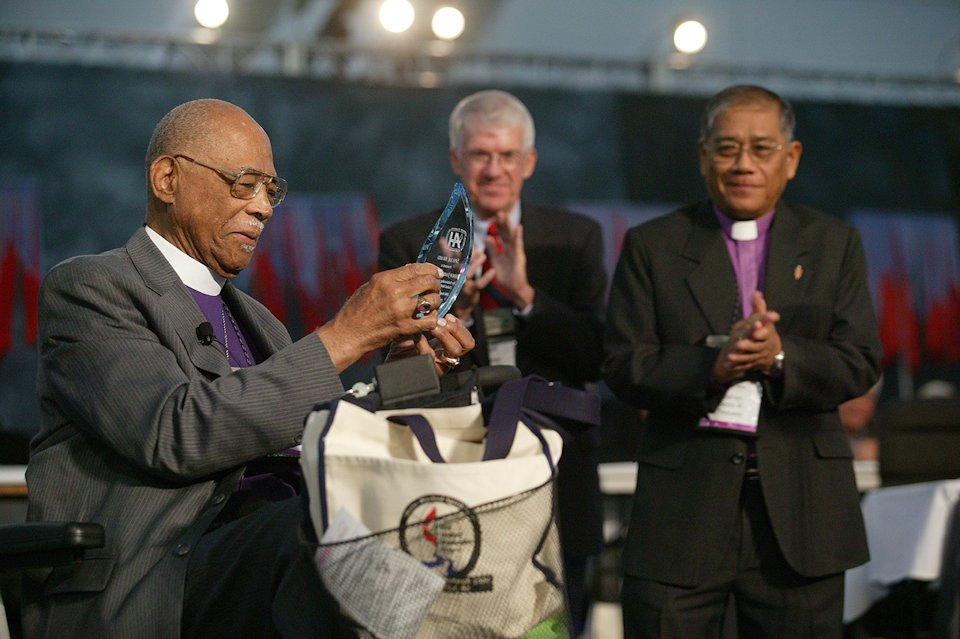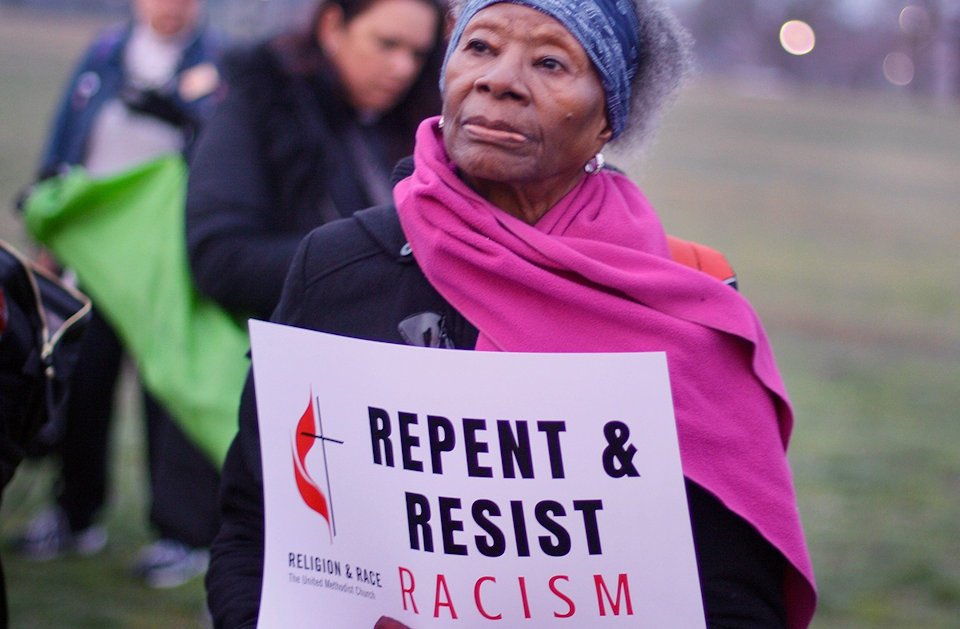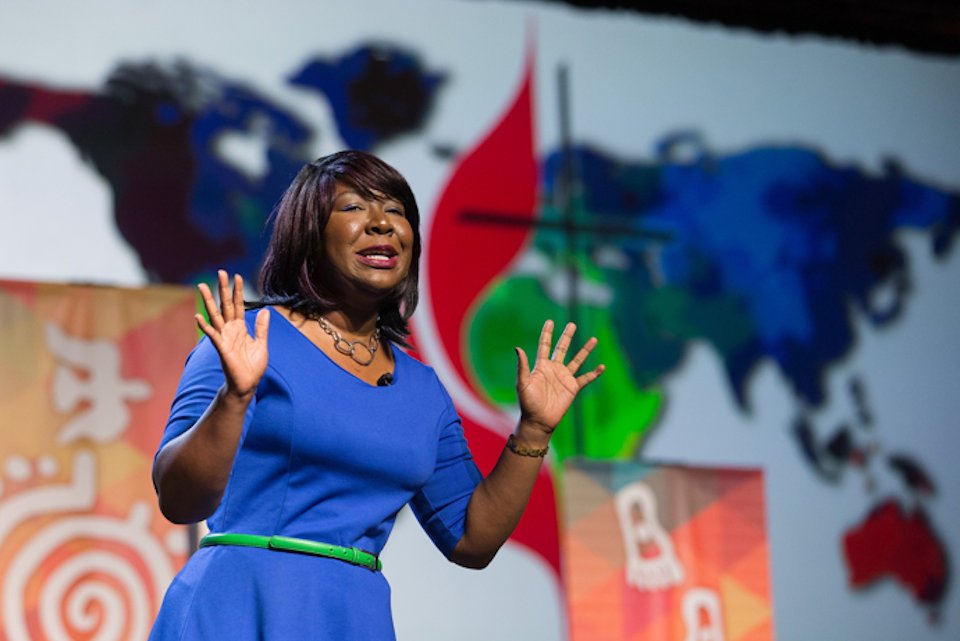Scott Manning, a member of the Conference Board of Justice, examines positive and negative glimpses of church and nation during Black History Month.
REV. SCOTT MANNING
Board of Justice, Michigan Conference
February is Black History Month in the United States. The history of blacks in America and in the Methodist movement is long and conflicted. Our history as a nation and as a church provides positive and negative images and glimpses into the story of both church and state in America. Our nation, through recognition of national holidays and observances, calls us to remember the history and contributions of blacks in the life of our American experience. The church has also called us to observe and recognize the history and contributions of blacks in the church and the community.
During this Black History Month, we recognize well-known leaders and contributors to the American experience. Such names of note include the Rev. Dr. Martin Luther King Jr, Malcolm X, Rosa Parks, Harriet Tubman, and Barack Obama. We should also take time to note the contributions of others, such as Hiram Revels, Benjamin Banneker, Absalom Jones, Richard Allen, Isabella Baumfree, Sara Boone, Woodie White, and Sarah Goode.
Hiram Revels, an African Methodist Episcopal Church clergyman, was the first black United States Senator. He was appointed by the Mississippi Legislature (when Senators were appointed, not elected) to fill the seat vacated by Jefferson Davis. Benjamin Banneker, the child of a freed black man and a mulatto woman, was the first black to be commissioned with an appointment in the new nation, being appointed by President George Washington to be part of a three-man team to plot and design the District of Columbia and home of our nation’s government. Their stories are important in the life of the nation and the church, though they are often forgotten in their respective areas of contribution in our culture today.
Isabella Baumfree is better known as, Sojourner Truth. An escaped slave who challenged systemic racism and legalized oppression, Truth stood up against the evils of slavery and led many to the path that would be known as the Underground Railroad helping countless numbers of slaves escape to freedom in the north and to Canada. Her contributions also helped to push many Methodists to action in the abolitionist movement and the fight for civil rights for blacks, for women, and for the suffragette movement.
Sara Boone and Sarah Goode are names of women who have helped through their inventions. Boone created the ironing board as we know it today, with the folding legs and the shape that allows ironing of clothing better. Goode created the early version of what is now known as a sofa bed. In addition to these contributions, blacks brought us inventions and improvements such as the roadway stoplight, heart and blood procedures, and much more.
Methodists have a long and challenging history in relation to race and ethnicity. In the context of Black History Month, the names of Absalom Jones and Richard Allen come to the forefront. Jones and Allen were part of St. George’s Methodist Episcopal Church in Philadelphia, where an incident took place November 18, 1787. Parishioners were invited into a time of prayer during the service and members began to kneel and close their eyes for prayer. Absalom Jones was manhandled by white church leaders who demanded he not kneel in a certain area of the church, an admonition because of his race. Upon the conclusion of the prayer time, the black members of the congregation left the church never to return; Richard Allen, along with Absalom Jones would then go on to plant a new congregation and later form a new denomination. The year in which the St. George’s incident took place was the same year that our nation’s Continental Congress had written and the various colonial legislatures were debating approval of the new nation’s constitution.

Just as America has formed and changed, so has the church. As the American community has struggled with and fought over issues of race and status, so has the church. We have seen schisms and divisions over race in Methodism, with at least eight splits and schisms taking place. Three parts of schism were ended in 1939 when the Methodist Episcopal, Methodist Episcopal South, and Methodist Protestant Churches ended division and formed The Methodist Church. One of the struggles in that formation continued to be the relationship of the denomination with its black members and black churches, with the dignity and respect of individuals and preachers in the life and leadership of the church.
In 1939, as The Methodist Church was established, a Central Jurisdiction was created to deal with and to connect black congregations and clergy together. This Central Jurisdiction overlapped annual conferences and regional jurisdictions to place black churches together. This process was a means of segregation on one side of the equation coin and security on the other. The central conference model served as a compromise of sorts between the different factions of the church, with some seeking separation and others hoping for progress. This model would stay in place until the Evangelical United Brethren Church dmerge with The Methodist Church in 1968 to create The United Methodist Church.
The creation of The United Methodist Church came in the midst of a national struggle and great turmoil in the streets around race concerns. A new church was created in the time of the civil rights movement. As the process was taking place in 1967 to prepare for the General/Uniting Conference, a group of black Methodist clergy and laity gathered in Detroit during November 1967 to address concerns and opportunities that would come with the merger. Concerns continued to loom around the placement of blacks in the life and ministry of the newly forming United Methodist Church.
According to the Black Methodists for Church Renewal, Inc., webpage historical statement, the gathered clergy and laity were confronted with the question, “Will there be a permanent place in the new United Methodist Church for Black Methodists?” Further, BMCR states that “the question was important because it spoke to the historical reality that the Methodist Church had never accorded to blacks equal status as Christian sisters and brothers.” These questions were on the minds of those who had been at the November gathering in Detroit and then a larger follow-up gathering in February 1968 when a national gathering was held in Cincinnati, Ohio.
Two things came out of those historic meetings in Michigan and Ohio. First, those gathered from among the churches and leaders of the black central conference set out to organize to ensure that blacks had a place in the newly forming United Methodist Church, as equal members and partners in the ministry and life of The United Methodist Church. Secondly, those gathered knew that it was important to hold the larger church accountable and, thus, they prepared a petition to create the General Commission on Religion and Race in the new denomination.

One of the pioneers and catalysts for the development of the Commission on Religion and Race was the Rev. Woodie White. At the time, Rev. White was a Detroit Conference clergyman who had served East Grand Boulevard Methodist Church from 1963-67 and then served as an Urban Missioner for the Detroit Conference. He worked in the metropolitan Detroit area for two years, seeking pathways for healing and reconciliation, for truth and justice following race riots and struggles within the larger Detroit area. Upon the establishment of the General Commission on Religion and Race at the 1968 General Conference, Woodie White would become the first General Secretary of the Commission. He held that position until he was elected to the episcopacy in 1984 by the North Central Jurisdictional Conference. Bishop White would also be called upon to address racism and pathways to justice and reconciliation in Australia and New Zealand through the work of the World Council of Churches.
Our United Methodist heritage has included struggles and opportunities, injustice and reconciliation, hopelessness and hopefulness. One of the lasting legacies of the black Central Conference visionaries has been to hold the church accountable for its actions and its vision and, likewise, to remind it of its opportunities in ways that the fullness of the Kingdom of Christ can be realized.
Just as has been the case in our identity as a nation, there have been triumphs along with the trials and tribulations in our struggles for racial and ethnic identity and equality. While a nation still struggled with racial injustice, it placed a high level of trust in a black man to help plan our nation’s capital. In the midst of reconstruction, a state placed a high level of trust in a black preacher to replace the man who tried to split the nation over slavery. And, further, a nation still struggling with racial equality and identity saw fit to take a leap forward and elected a black man to the highest office, placing the greatest level of trust in a man the power to lead an entire nation. This vision required accountability and resolve to move a nation forward, and that same vision requires continued monitoring and dialogue.
The church, like the nation, has its storied past and has its present-day struggles. When BMCR came into existence, their vision for the Commission on Race and Religion may have centered around race and the placement of blacks in the life and the ministry of The United Methodist Church, but that vision extends further out. It is a vision that has led to dialogue with sister churches whose history comes out of schisms and separations related to our storied past, opening the door to full communion relationships and missional partnerships. It is a vision that has opened the door to honest dialogue in ways in which the church can and should reach out into the world, opening the church to various racial and ethnic cultures and communities in ways that the love of God may be increased. That vision still requires accountability and resolve to ensure that the church is open and making safe space for people of various backgrounds to find the love of God in a community of faith.

United Methodism at 50 is a denomination that reaches into many nations across the globe. BMCR asked the question, “Will there be a permanent place in the new United Methodist Church for Black Methodists?” Is your church a place of welcome that a person of color may find a welcoming presence? If your church is a majority person of color congregation, is it welcoming to someone who is not a person of color?
The deep concern, of those who were gathered that late November 1967 and then in early February 1968, was about the dignity and the respect of black persons in a predominately white church structure. Their vision was much greater, though, in finding a way to renew a church and build a kingdom filled with diverse people. As a United Methodist and as a church community, how are you making this vision come to life?
The purpose of the Commission on Religion and Race continues to be one of monitoring and accountability, following the mandate of General Conference. The Michigan Area Commission on Religion and Race takes its role seriously to ensure that there is a permanent place for persons of color in the life of The United Methodist Church. The Commission recognizes its role as a monitor and also recognizes the opportunity to share resources and help in the renewal of the church as a vital center of worship and mission in the world. The work of the Commission on Religion and Race began in 1968 out of the concern of black Methodists seeking a place of equality and vibrancy within a new denomination, and that mission continues. Further, that mission is seen in a much broader context of looking at the vibrancy of the church for all races and ethnic groups to find safe sanctuaries, transformational experiences, and growth as a body of faith.
Notes
[1] The African-American Book of Days, Inspirational History and Thoughts For Every Day of the Year, Julia Stewart. (p. 15) 1996, Citadel Press
[1] Manning, Lett family history notes. Also found in The African-American Book of Days, (p.271)
[1] The African-American Book of Days, (p. 148)
[1] The African-American Book of Days, (p. 189)
[1] The African-American Book of Days, (p. 309)
[1] BMCRUMC.org website, Our History
[1] Notations from The Rev. Charles Boayue and Wikipedia relating to Woodie W. White
Last Updated on September 20, 2022

